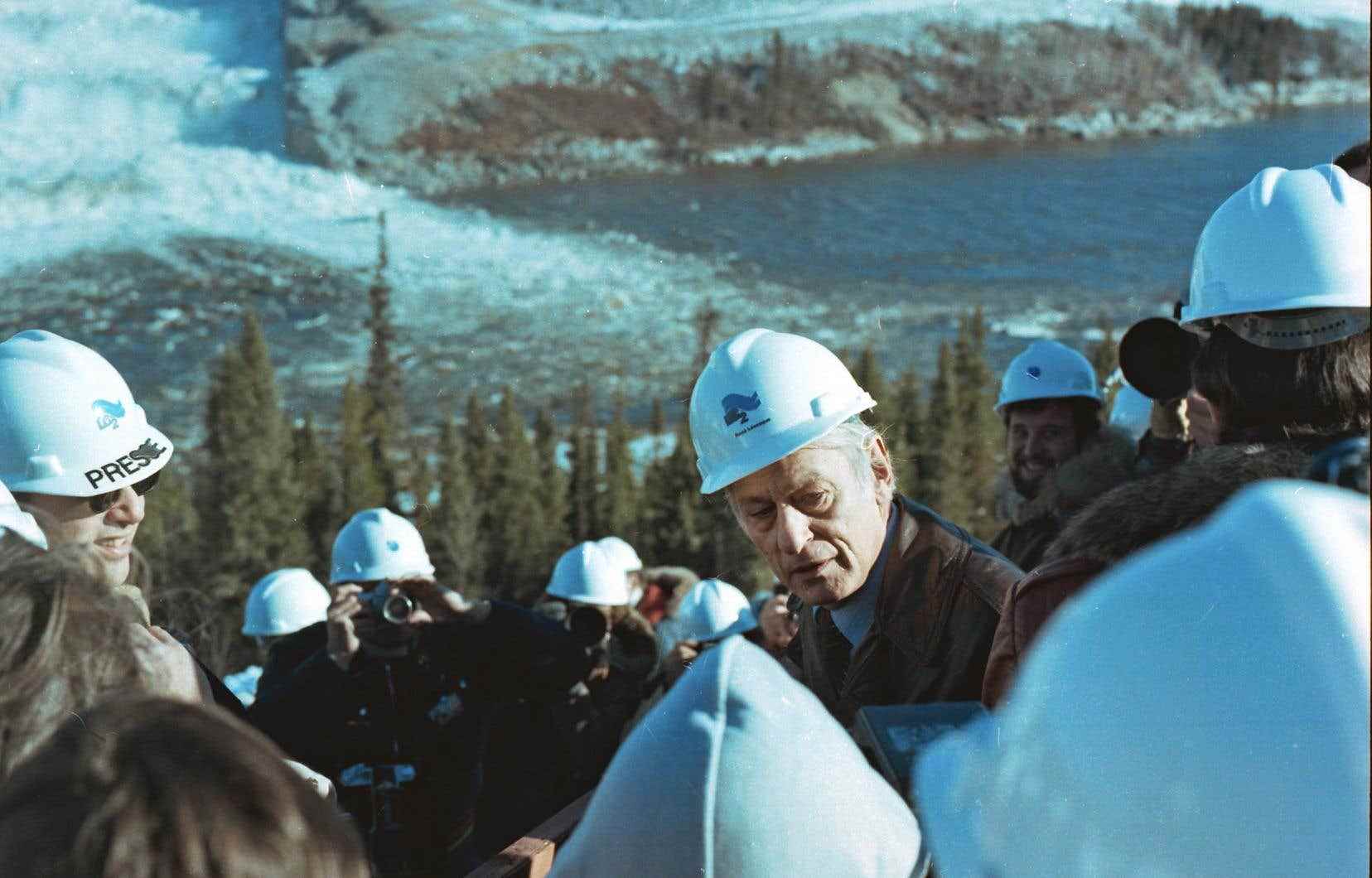Before being the one who carried the hopes of millions of Quebecers, René Lévesque was a child. He was a brilliant and unruly child, the son of a lawyer, who lived in the Gaspé village of New Carlisle and was sent to play tennis to get him out of the books in his parents’ library, which he devoured.
It’s a bit like how it opens René and Lévesquethe new exhibition at the Musée de la civilisation, located in Québec, which tries to make a connection between the young René Lévesque who became a journalist and the charismatic and complex politician who laid several foundations for modern Québec.
The young René shows very early talents for writing. In the glass cases, we can see an early composition, written when he was around 13 years old, for the student newspaper of the Gaspé seminary, on the reasons for “staying French” in Quebec. From these early years, we will also see the microphone of the radio station CHNC, where the young Lévesque made his debut at the age of 15, or the letter marking his expulsion from the Jesuit college for indiscipline…
Journalist at heart
But it was really his years as a war correspondent that formed his mind in international affairs. “If he were still alive today, he would be a journalist,” says Martine Tremblay, vice-president of the René-Lévesque foundation, which is behind the exhibition.
A good part of the exhibited objects come in fact from an appeal to the public launched by the museum to collect pieces evoking the universe and the life of René Lévesque.
The response was enthusiastic: of the 250 artifacts thus collected, 60 are on display here. René Lévesque’s daughter, Suzanne Lévesque, lent the politician’s ashtray, once filled to the brim. His son Claude Lévesque, who was a journalist at To have tofor his part lent the precious Remington typewriter, dating from the 1950s, from his visionary father.
Among the artifacts, photos, numerous letters and numerous recordings, the highlight of the exhibition is undoubtedly this paper placemat from the Homestead restaurant in Old Quebec signed by the resigning members of the Liberal Party who followed René Lévesque in 1967. He had just presented a manifesto entitled A sovereign Quebec in a new Canadian union, which the party had refused to discuss.
We can also see a ballot showing the name of René Lévesque, Liberal candidate in Montréal-Laurier. On this same ballot also appears the name of another René Lévesque, candidate, for his part, for the Union Nationale party, which sought to break the popularity of the first by trying to misunderstand the electorate. Lucien Bouchard, honorary president of the year René Lévesque, discovered the man when he was 17, through the reports abroad of focus. Close to Lévesque, whom he did not follow in the Parti Québécois in 1976, he noted that the results of the 1980 referendum had long pained the founder of the party, “who understood”, however, the ambivalence of the Quebec people, that he found in himself.
Mr. Bouchard also says he still believes today that the sovereignty project remains the best possible avenue.
All the objects in the exhibition dress up the legend of a man who, moreover, was not encumbered with material possessions. “He kept nothing,” says Martine Tremblay.
The exhibition openly aims to reach a young audience, which is not necessarily initiated into recent Quebec politics and who did not know René Lévesque during his lifetime. “I didn’t think we would still be talking about my father 35 years after his death,” says Suzanne Lévesque, clearly moved by the event.
The director of the Musée de la civilisation, Stephan Laroche, also notes that this museum is the ideal place to host this exhibition since the establishment was created under the Lévesque government, under the initial name of Musée de l’innovation. After the Musée de la civilization du Québec, the exhibition René and Lévesque should, in 2024, go on tour in regional museums and the new Blue Spaces of Quebec.
